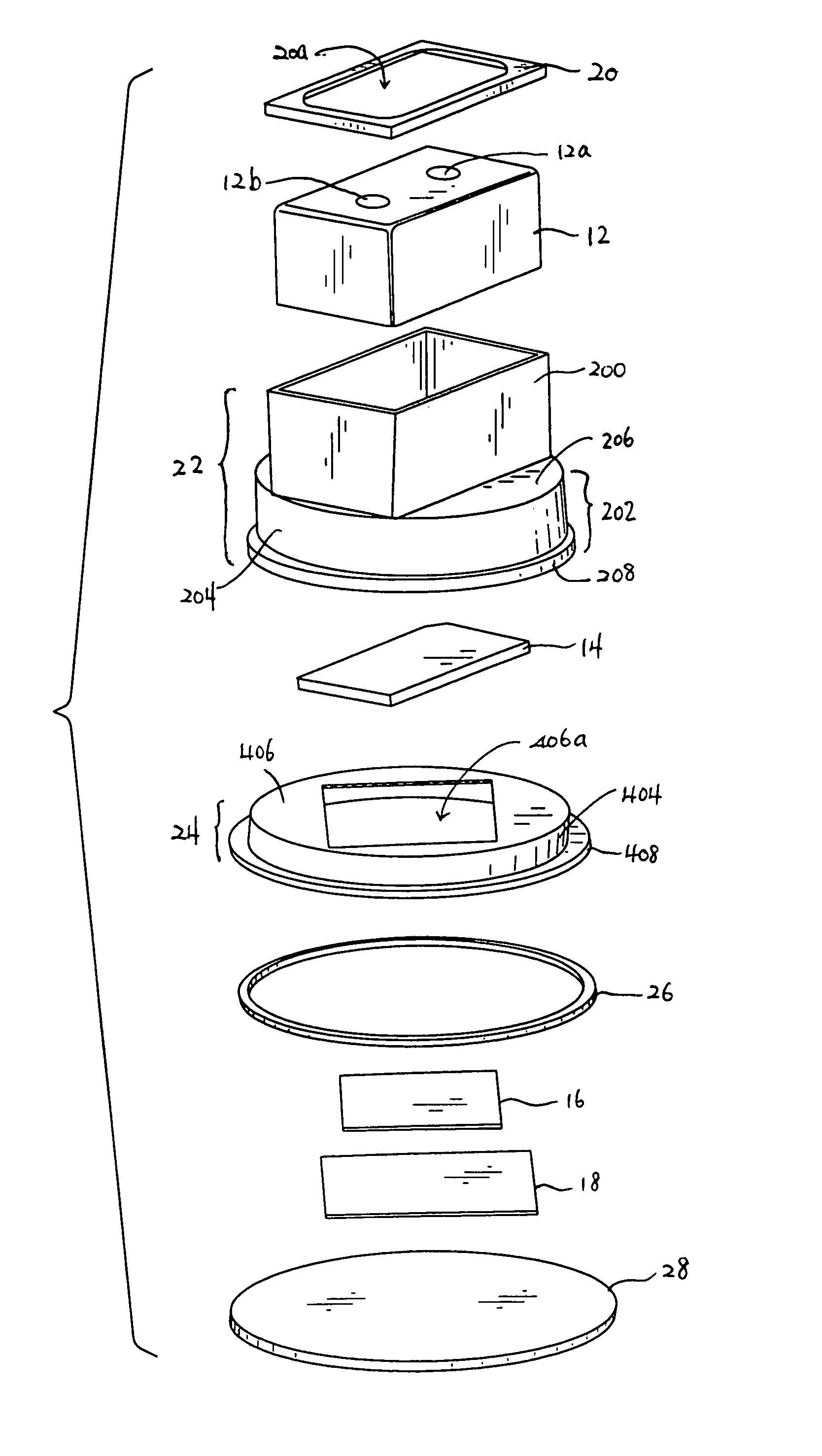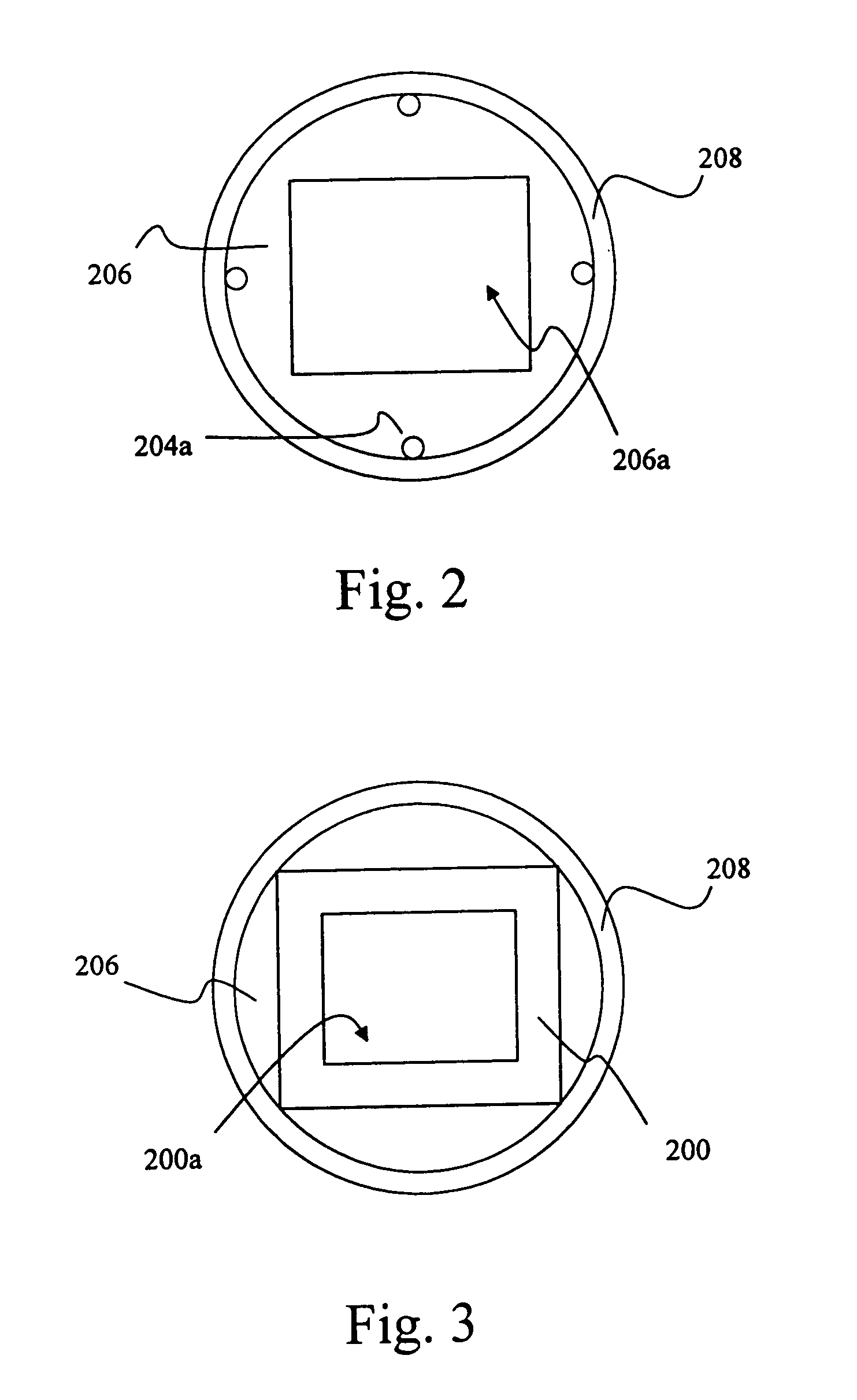Cold shield for cryogenic camera
a cryogenic camera and shielding technology, applied in the field of cold shields, can solve the problems of misalignment between the lens and the focal plane array, the application of multi-image detector assemblies in cryogenic applications, and the inability to provide feedback
- Summary
- Abstract
- Description
- Claims
- Application Information
AI Technical Summary
Benefits of technology
Problems solved by technology
Method used
Image
Examples
Embodiment Construction
[0016]As shown in FIG. 1, a cryogenic camera, including a multiple-element lens assembly 12, a filter 14, a focal plane array 16 and a readout integrated circuit 18, is shielded by a cold shield. In this embodiment, a standard cryogenically cooled infrared (IR) optical system is used. It is appreciated that the application of the cold shield can be expanded to any optical system for image registration without exceeding the spirit and scope of the present invention. Both the cryogenic camera and the cold shield shielding are disposed in a cryo-vacuum dewar and cooled to cryogenic temperatures. In such way, external radiation can be reflected by the cold shield, while the elements of the camera, including the multiple-element lens assembly 12, the filter 14, the focal plane array 16 and the readout integrated circuit 18, are cooled down to a temperature so low that no radiation is emitted to cause thermal noise. In practical application, the multiple-element lens assembly 12 is dispos...
PUM
 Login to View More
Login to View More Abstract
Description
Claims
Application Information
 Login to View More
Login to View More - R&D
- Intellectual Property
- Life Sciences
- Materials
- Tech Scout
- Unparalleled Data Quality
- Higher Quality Content
- 60% Fewer Hallucinations
Browse by: Latest US Patents, China's latest patents, Technical Efficacy Thesaurus, Application Domain, Technology Topic, Popular Technical Reports.
© 2025 PatSnap. All rights reserved.Legal|Privacy policy|Modern Slavery Act Transparency Statement|Sitemap|About US| Contact US: help@patsnap.com



